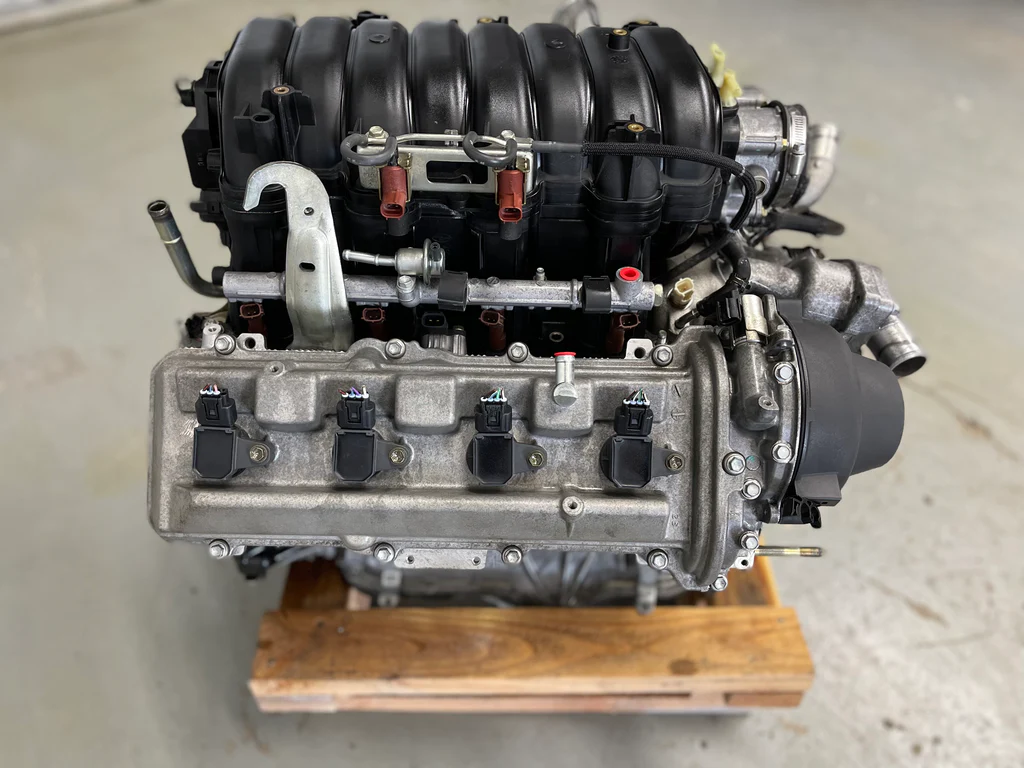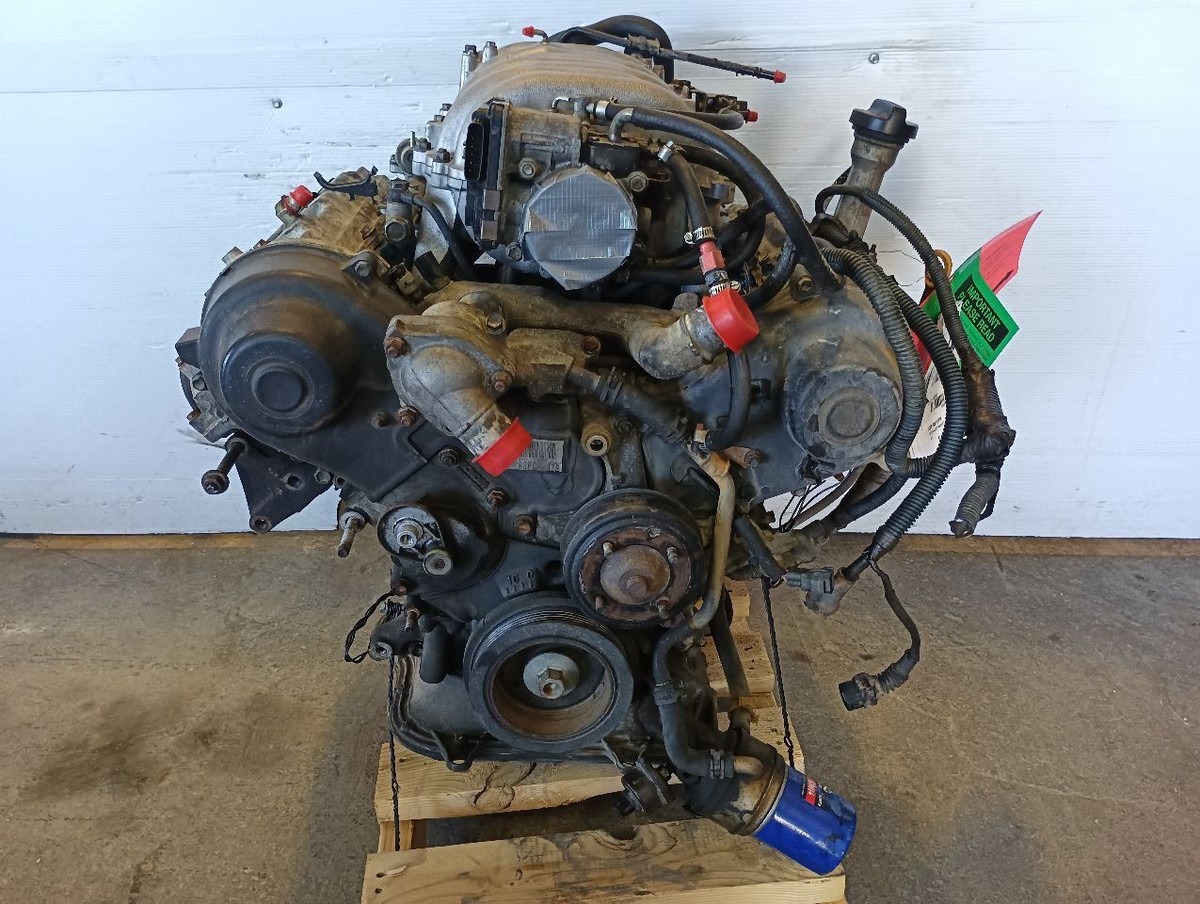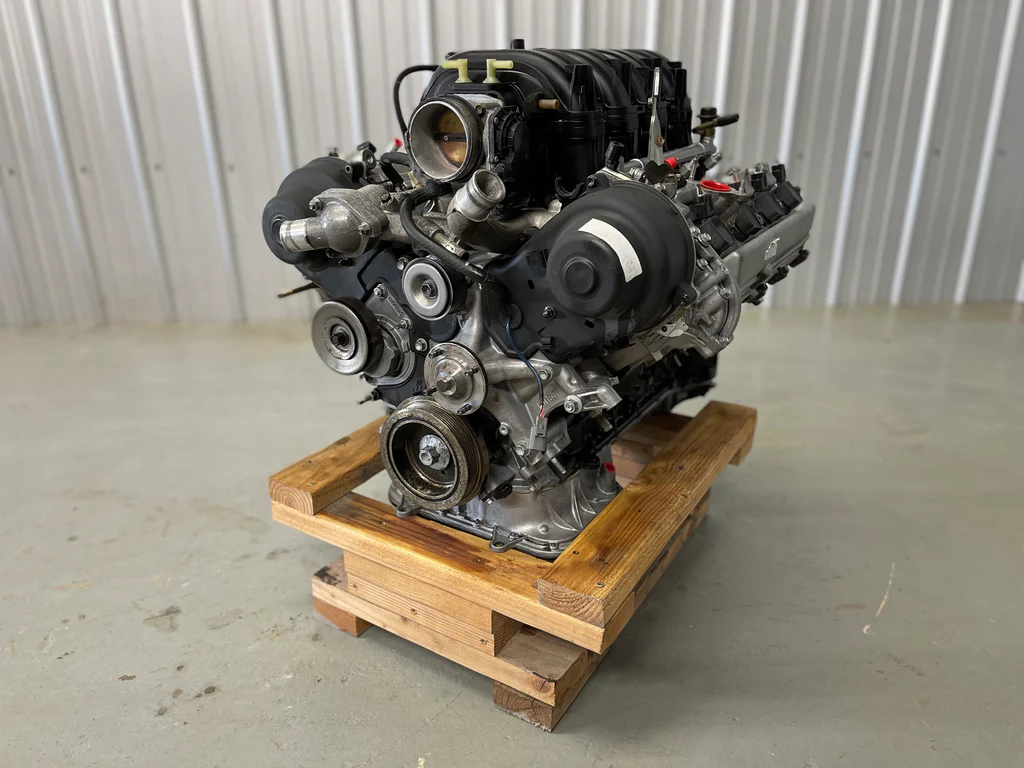2UZ-FE 4.7L Engine: Specifications, Applications, and FAQs
The 2UZ-FE 4.7L V8 engine is part of Toyota’s highly regarded UZ engine family, which includes the 1UZ-FE and 3UZ-FE. Unlike its aluminum-block siblings, the 2UZ-FE was engineered with a cast-iron block for enhanced durability, making it particularly well-suited for heavy-duty vehicles such as SUVs, trucks, and off-road applications. Renowned for its longevity, smooth operation, and reliability, the 2UZ-FE is a favorite among Toyota enthusiasts and off-roaders worldwide.

2UZ-FE 4.7L Engine
Key Specifications of the Toyota 2UZ-FE Engine
| Specification | Details |
|---|---|
| Engine Code | 2UZ-FE |
| Configuration | 90° V8, DOHC, 32 valves |
| Displacement | 4.7 liters (4663 cc) |
| Bore x Stroke | 94.0 mm × 84.0 mm |
| Block Material | Cast-iron |
| Cylinder Head Material | Aluminum alloy |
| Compression Ratio | 9.6:1 (varies by model/year) |
| Valvetrain | DOHC with 4 valves per cylinder (VVT-i on later models) |
| Fuel System | Multi-port fuel injection |
| Ignition System | Distributor-less ignition |
| Horsepower | 230–282 hp (172–210 kW) depending on year and application |
| Torque | 300–330 lb-ft (407–447 Nm) |
| Fuel Type | Gasoline (unleaded) |
| Weight | ~260–280 kg (575–617 lbs) |
| Timing | Timing belt (non-interference design) |
| Production Years | 1998 – 2011 |
Features of the 2UZ-FE
-
Durability and Strength – The cast-iron block design is heavier but provides added strength, perfect for towing and off-road use.
-
VVT-i (Variable Valve Timing with intelligence) – Later versions (post-2005 in most markets) featured VVT-i for improved fuel efficiency and power delivery.
-
Smooth V8 Performance – Excellent refinement with a balance of torque and horsepower.
-
Longevity – Known to exceed 300,000 miles (480,000 km) with proper maintenance.
-
Aftermarket Support – Popular among tuners and off-road enthusiasts, with available upgrades like superchargers, headers, and ECU tuning.

2UZ-FE 4.7L Engine
Vehicles Equipped with the 2UZ-FE Engine
The 2UZ-FE was primarily used in Toyota’s SUVs and trucks, as well as select Lexus luxury models:
Toyota Applications
-
Toyota Land Cruiser (J100, J200) – 1998–2011
-
Toyota Sequoia (1st Gen) – 2000–2009
-
Toyota Tundra (1st Gen) – 1999–2009
-
Toyota 4Runner (4th Gen, limited trims) – 2003–2009
Lexus Applications
-
Lexus LX 470 – 1998–2007
-
Lexus GX 470 – 2002–2009
These vehicles benefited from the 2UZ-FE’s torque-heavy nature, ideal for towing, off-roading, and hauling.
Maintenance and Reliability
The 2UZ-FE is highly reliable but does require proper care:
-
Timing Belt – Replace every 90,000–100,000 miles. Failure won’t usually damage the engine due to its non-interference design, but it can leave you stranded.
-
Oil Changes – Regular oil changes with high-quality synthetic oil ensure longevity.
-
Cooling System – Maintain radiator and water pump health to prevent overheating.
-
Ignition Coils and Injectors – May require replacement after high mileage.
Common Issues
While robust, some common issues may arise:
-
Exhaust Manifold Cracks – Due to heat stress in high-mileage vehicles.
-
Oil Leaks – From valve cover gaskets and camshaft seals.
-
Fuel Economy – Averaging 12–16 mpg, it’s not the most fuel-efficient engine.
-
Heavier Block – Adds weight compared to aluminum 1UZ and 3UZ engines.

2UZ-FE 4.7L Engine
FAQs About the Toyota 2UZ-FE
1. How much horsepower does a 2UZ-FE produce?
Depending on the model and year, the 2UZ-FE produces 230–282 hp and 300–330 lb-ft of torque. Later VVT-i versions are more powerful.
2. Is the 2UZ-FE an interference engine?
No, it’s a non-interference engine, meaning a timing belt failure will not typically result in valve-to-piston contact.
3. What vehicles use the 2UZ-FE?
It was mainly used in Toyota trucks and SUVs (Tundra, Sequoia, Land Cruiser, 4Runner) and Lexus SUVs (LX 470, GX 470).
4. How reliable is the 2UZ-FE engine?
Extremely reliable, with many engines lasting 300,000+ miles when properly maintained.
5. Can you swap a 2UZ-FE into other vehicles?
Yes. Due to its popularity, it is often swapped into older Toyota trucks, off-road builds, and even hot rod projects.
6. What’s the fuel economy of the 2UZ-FE?
On average, 12–16 mpg city/highway combined, depending on vehicle size, load, and driving style.
7. Does the 2UZ-FE support forced induction (supercharging/turbocharging)?
Yes. Aftermarket superchargers (like TRD kits) and turbo setups are available, but the stock internals may limit extreme boost levels.
8. What’s the difference between the 1UZ-FE, 2UZ-FE, and 3UZ-FE?
-
1UZ-FE – 4.0L aluminum-block V8 (luxury sedans, sports cars).
-
2UZ-FE – 4.7L cast-iron block V8 (SUVs, trucks).
-
3UZ-FE – 4.3L aluminum-block V8 (luxury models).
The Toyota 2UZ-FE 4.7L engine remains one of the most respected V8s in Toyota’s history. With its iron-block strength, V8 smoothness, and legendary reliability, it’s the heart of many beloved Toyota and Lexus SUVs and trucks. Although not the most fuel-efficient option, its durability and torque make it a top choice for off-roaders, towers, and long-term Toyota fans.




